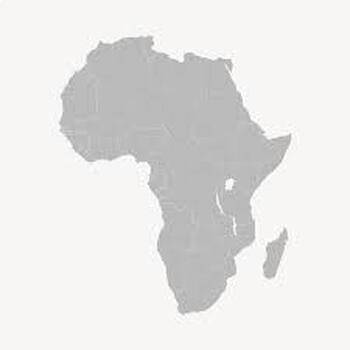African Studies Unit for Georgia Performance Standards-7th Grade
Stories out of the Shadows
0 Followers

Includes Google Apps™
This bundle contains one or more resources with Google apps (e.g. docs, slides, etc.).
Products in this Bundle (10)
showing 1-5 of 10 products
Description
This differentiated unit addresses all of the Social Studies Georgia Performance Standards:
- SS7H1 Analyze continuity and change in Africa.
- a. Explain how the European partitioning across Africa contributed to conflict, civil war, and artificial political boundaries in Africa today.
- b. Explain how the Pan-African movement and nationalism led to independence in Kenya and Nigeria.
- c. Explain the creation and end of apartheid in South Africa and the roles of Nelson Mandela and F.W.de Klerk.
- SS7G1 Locate selected features of Africa.
- a. Locate on a world and regional political-physical map: Sahara, Sahel, savanna, tropical rain forest, Congo River, Niger River, Nile River, Lake Victoria, Great Rift Valley, Mt. Kilimanjaro, Atlas Mountains, and Kalahari Desert.
- b. Locate on a world and regional political-physical map the countries of Democratic Republic of the Congo, Egypt, Kenya, Nigeria, South Africa, and Sudan.
- SS7G2 Explain environmental issues across the continent of Africa.
- a. Explain how water pollution and unequal access to water impacts irrigation, trade, industry, and drinking water.
- b. Explain the relationship between poor soil and deforestation in Sub-Saharan Africa.
- c. Explain the impact of desertification on the environment of Africa.
- SS7G3 Explain the impact of location, climate, and physical characteristics on population distribution in Africa.
- a. Explain how the characteristics in the Sahara, Sahel, savanna, and tropical rain forest impact trade and affect where people live.
- SS7G4 Analyze the diverse cultural characteristics of the people who live in Africa.
- a. Explain the differences between an ethnic group and a religious group.
- b. Describe the diversity of religions within African ethnic groups. Government/Civic Understandings
- SS7CG1 Compare and contrast different forms of citizen participation in government.
- a. Explain the role of citizen participation in autocratic and democratic governments.
- b. Describe the two predominant forms of democratic governments: parliamentary and presidential.
- c. Explain the role of citizens in choosing the leaders of South Africa (parliamentary democracy), Nigeria (presidential democracy), and Kenya (presidential democracy).
- SS7CG2 Analyze how government instability in Africa impacts standard of living.
- a. Describe the impact of government instability on access to education and the distribution of medicine and food to combat diseases and famine across Africa. Economic Understandings
- SS7E1 Analyze different economic systems.
- a. Compare how traditional, command, and market economies answer the economic questions of 1-what to produce, 2-how to produce, and 3-for whom to produce.
- b. Explain that countries have a mixed economic system located on a continuum between pure market and pure command.
- c. Compare and contrast the economic systems in South Africa, Nigeria, and Kenya.
- SS7E2 Explain how voluntary trade benefits buyers and sellers in Africa.
- a. Explain how specialization encourages trade between countries.
- b. Compare and contrast different types of trade barriers, such as tariffs, quotas, and embargoes.
- c. Explain why international trade requires a system for exchanging currencies between nations.
- SS7E3 Describe factors that influence economic growth and examine their presence or absence in Nigeria, South Africa, and Kenya.
- a. Evaluate how literacy rates affect the standard of living.
- b. Explain the relationship between investment in human capital (education and training) and gross domestic product (GDP per capita).
- c. Explain the relationship between investment in capital goods (factories, machinery, and technology) and gross domestic product (GDP per capita).
- d. Explain how the distribution of natural resources affects the economic development of Africa.
- e. Describe the role of entrepreneurship.
Total Pages
Answer Key
N/A
Teaching Duration
N/A
Report this resource to TPT
Reported resources will be reviewed by our team. Report this resource to let us know if this resource violates TPT’s content guidelines.


